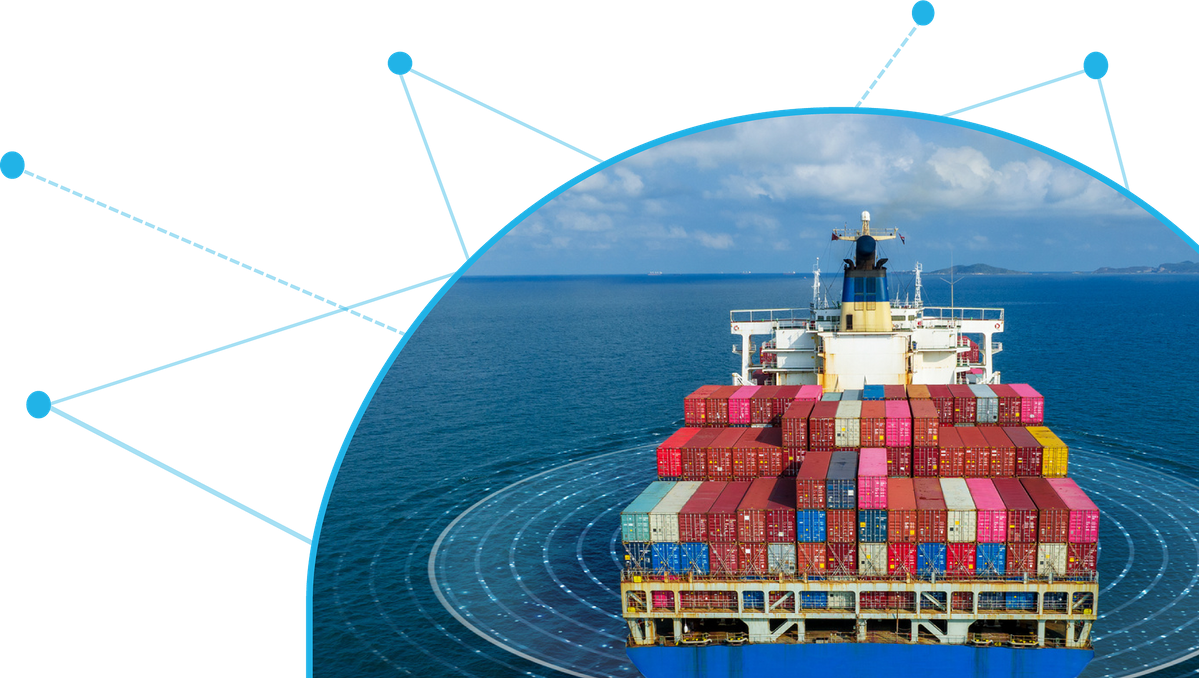Decarbonisation Through Automation: Unlocking Emissions Reductions and Operational Efficiency in the Energy Transition
The world is facing an urgent need to reduce carbon emissions, and industries are under increasing pressure to decarbonise their operations. Governments, investors, and consumers alike are demanding more sustainable practices, with the goal of mitigating climate change and reducing environmental impact. However, the path to decarbonisation isn’t always straightforward – many companies fear that reducing their carbon footprint could come at the expense of profitability and efficiency.
In response to these challenges, a powerful solution emerging is the intersection of two transformative forces: automation and decarbonisation. Automation and autonomous technologies, once viewed solely as tools for improving operational efficiency and reducing costs, are now recognised as key enablers of sustainable practices. By integrating automation systems with sustainability goals, industries can optimise processes, minimise waste, and drastically reduce their energy consumption and emissions.
This white paper explores how AST Networks can lead the way in helping companies navigate the dual goals of decarbonisation and operational efficiency through automation and autonomy. We will examine the technologies driving this shift, the practical applications in various industries, and how AST Networks’ solutions are uniquely positioned to support this transition.
Automation as a Key Enabler of Decarbonisation
Decarbonisation aims to reduce or eliminate the carbon emissions produced by industrial and energy-related activities. Traditionally, companies have approached this challenge by focusing on cleaner energy sources and energy efficiency improvements. However, the integration of automation offers a complementary and often more powerful pathway to emissions reduction.
Automation enhances operational efficiency by optimising processes, reducing energy consumption, and enabling better decision-making in real-time. These efficiencies naturally lead to fewer emissions, making automation a critical tool in the broader effort to decarbonise industrial operations.
For example, in manufacturing, automated systems can precisely control the amount of energy used in production processes, ensuring that only the required resources are consumed. Automated logistics systems can optimize transportation routes, reducing fuel consumption and the carbon footprint of supply chains. In energy production, autonomous monitoring and control systems can continuously adjust operations to ensure minimal waste and maximum efficiency, whether in a traditional oil field, or renewable energy plant.
Incorporating automation into decarbonisation strategies allows companies to balance environmental sustainability with profitability. This is particularly critical for industries such as energy, transportation, and manufacturing, where reducing emissions can be complex and expensive without the operational gains that automation provides.

Automating Emissions Control and Monitoring
A crucial aspect of decarbonisation is the ability to monitor and control emissions in real-time. Automation technologies, including IoT sensors, AI, and machine learning, are revolutionising the way companies manage their emissions. These technologies provide real-time data on energy use, resource consumption, and carbon output, enabling companies to make proactive adjustments to minimise their carbon footprint.
IoT sensors embedded in key equipment can track emissions at every stage of production. These sensors send continuous data streams to centralized systems, where AI-powered analytics can detect inefficiencies and potential emission spikes. In response, the system can automatically adjust operations to reduce energy use, or switch to cleaner energy sources, effectively mitigating carbon output without human intervention.
For example, in an energy facility, autonomous systems can monitor CO2emissions and adjust to optimise energy efficiency whilst adhering to regulations. These automated systems act faster than manual adjustments ever could, providing a more agile approach to emissions control. Over time, this can lead to significant reductions in emissions, whilst maintaining operational performance.
For AST Networks, offering solutions that integrate real-time emissions monitoring and automated controls is a profound opportunity. This approach allows customers to not only track their carbon footprint, but also actively reduce it through automated decision-making in real-time.
Smart Energy Management Systems
Energy management is a key area where automation plays a direct role in decarbonisation. Smart energy management systems (EMS) integrate renewable energy sources, manage demand fluctuations, and optimize energy usage to minimise both costs and emissions.
Automated EMS can manage energy consumption across industrial facilities by using AI algorithms to predict and control usage. These systems can integrate multiple energy sources – such as solar, wind, and traditional power– whilst optimising for the lowest carbon footprint. For example, an EMS could prioritise solar energy during peak sun hours whilst minimising reliance on fossil fuels, thus reducing overall emissions.
These systems also allow companies to balance energy consumption with real-time energy demand, ensuring that no unnecessary energy is consumed. The result is a more efficient use of energy resources, leading to significant emissions reductions, without sacrificing operational needs.
AST Networks can offer tailored smart energy management solutions that help companies integrate renewable energy sources into their existing infrastructure. This will allow them to achieve their decarbonisation targets whilst maintaining the operational flexibility required to remain competitive.
Autonomous Operations Minimise Environmental Impact
Automation can also minimise the environmental impact of physical operations through autonomous technologies. Autonomous systems reduce the need for manual interventions, minimise human error, and operate with greater precision, all of which contribute to lower energy use and fewer emissions.
For instance, in oil and gas, autonomous drilling rigs can optimise operations by reducing downtime, minimising fuel consumption, and cutting energy waste. By using data analytics to predict equipment failures before they happen, these systems ensure that resources are used effectively and that unnecessary environmental disruptions are avoided.
Moreover, autonomous transportation and logistics systems can optimize routes and schedules, ensuring the least carbon-intensive paths are taken. This reduces both fuel consumption and emissions, making a significant impact on an organisations carbon footprint and costs.
The role of autonomous operations in decarbonisation extends beyond direct emissions reductions. By minimising human presence in hazardous environments (such as offshore oil rigs, or remote wind farms), these systems also contribute to safety, and reduce the need for energy-intensive support activities, such as transport of personnel.
Digital Twin Technology for Sustainability
A digital twin is a virtual model of a physical asset, system, or process that can simulate and optimise real-world operations. This technology is emerging as a powerful tool for both automation and decarbonisation, offering companies the ability to test and optimise their operations in a digital environment before implementing changes in the real world.
By using digital twins, companies can identify inefficiencies, test new processes, and predict how changes will impact both operational performance and emissions. For example, in a manufacturing facility, a digital twin can simulate energy usage across different production scenarios, helping businesses select the most energy-efficient processes.
Digital twins also enable predictive maintenance, reducing energy waste by ensuring that equipment operates at peak performance. Over time, this leads to lower energy consumption and fewer emissions.
For AST networks, offering digital twin solutions can give customers a powerful tool for reducing their carbon footprint. By simulating different scenarios, companies can make data-driven decisions that align with both their operational goals and their sustainability targets.
Automation and Decarbonisation in Action
Consider an energy company that integrated AST Networks automated emissions control and smart energy management systems into its operations. By installing IoT sensors across production facilities and using AI to analyse real-time data, the company would be able to identify significant inefficiencies in its energy use. Automated controls make continuous adjustments to optimise energy consumption, leading to the potential of a15% reduction in energy use and 20% decrease in emissions, over a 12-month period.
Additionally, if the company adopted digital twin technology to simulate various energy usage scenarios, they could fine-tune their operations to be able to achieve optimal energy efficiency, resulting in them not only meeting their carbon reduction goals, but also saving millions in operational costs.
Conclusion
The combination of decarbonisation and automation represents a powerful opportunity for companies looking to reduce emissions, whilst maintaining operational excellence. By integrating smart technologies such as IoT, AI, and digital twins, companies can achieve real-time emissions control, optimize energy use, and reduce their carbon footprint – all whilst cutting costs and improving performance.
AST Networks is uniquely positioned to support this transition, offering advanced automation and energy management solutions that help companies meet their decarbonisation targets. By embracing the intersection of automation and sustainability, businesses can future-proof their operations and lead the way in the global energy transition.
AST Networks Head Office
Satellite House, Bressemer Way Harfreys Industrial Estate
Great Yarmouth, Norfolk NR31 0LX, United Kingdom
+44(0)1493 440 011

